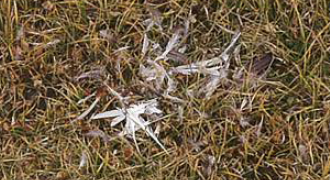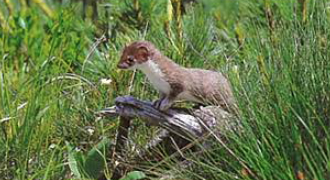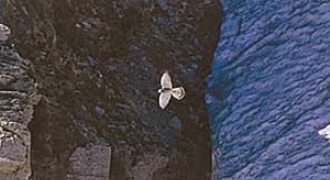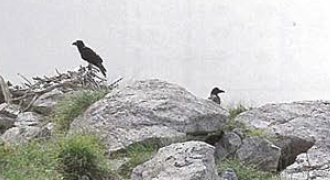
Lifespan of the rock ptarmigan
Investigating the lifespan of wild animals is extremely difficult. Since 1986, some rock ptarmigans in the Tateyama region have been fitted with leg bands, making it possible to recognize individuals, and in this way we have been able to understand a little bit more about their lifespan. However, there are too many variables to be able to establish a definitive average lifespan. Sometimes nests are attacked by stoats, or flooded by severe rains, preventing eggs from hatching. Chicks and juveniles have a high rate of early death from cold or attack by predators, so the average lifespan may actually be only a few months. What is now known is that for both males and females that live through their first winter, the average length of survival is about four years.
There are, however, many records of individuals living for long periods of time in Tateyama. The longest-lived individuals observed to date are a male that lived for 13 years and a female that lived for 12 years. These records are the longest for any rock ptarmigans found in Japan. It seems that males tend to live longer than females; to date there have been eight males that lived over 10 years, and five females that have lived over eight years documented in the region.
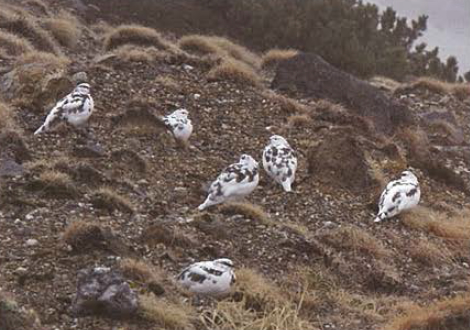
A group of 4 males and 2 females, molting in early November.
Young birds will soon face the trials of the harsh winter environment for the first time.
According to our current data, for juveniles that have lived through November, the percentage of individuals who survive until the spring is about 65%. The rate is slightly higher for males.
Predators
The main predator of the rock ptarmigan is thought to be the fox. When examining bite marks on the feathers scattered about where rock ptarmigans were preyed on as well as droppings of animals nearby, it is often surmised that a fox was responsible for the attack. There are a few pairs of foxes living in the Murododaira area. Another well-known predator of mountainous regions is the stoat, which turns white in the winter just like the rock ptarmigan. Stoats are known to steal eggs from nests and attack hatchlings and juveniles. The common kestrel, a bird of prey belonging to the falcon family, also inhabits the alpine region and its population has increased in recent years. Occasionally, kestrels have been known to attack nearby rock ptarmigan families, killing every single chick. Crows have also been observed to rob eggs from rock ptarmigan nests. Both carrion crows and jungle crows fly up to Tateyama in order to find animal remains, insects and other food sources.
Eagles and hawks seem to have little effect on the rock ptarmigan population. There have been only a couple of reports of golden eagles preying on rock ptarmigans, and it appears that they seldom fly through the Murododaira area. Hawk species tend to fly through the area during migration season, and have not been documented to hunt in the area.
